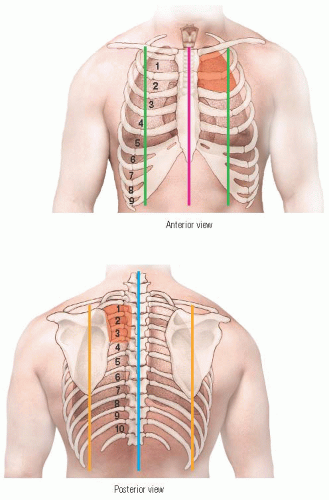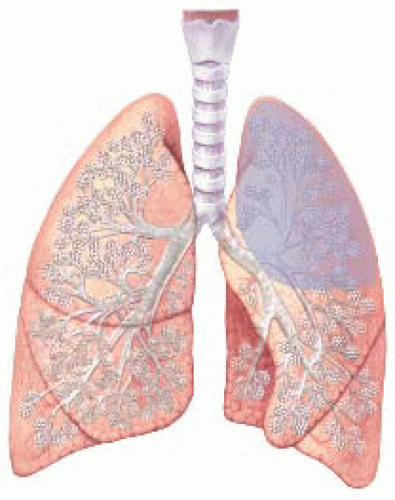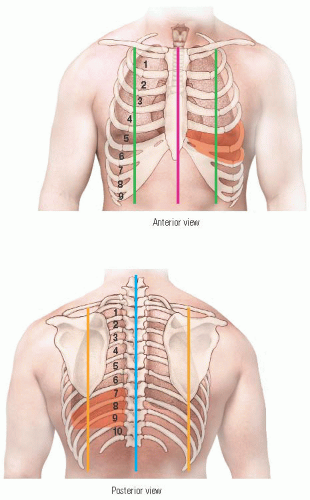Abnormal Voice Sounds
How are normal voice sounds produced?
Name the three voice sounds.
How do voice sounds change over areas of dense, airless lung tissue?
Which specific words or letters is the patient asked to repeat to detect changes in bronchophony and egophony?
Which auscultatory findings are associated with consolidation?
SOUND PRODUCTION
Voice sounds are produced by vibrations of the vocal cords as air from the lungs passes over them. The resonance of the mouth, nasopharynx, and paranasal sinuses helps to amplify these sounds. When voice sounds pass through normally inflated, air-filled lungs, vowel tones, which contain many high-frequency sounds, are diminished and filtered. Like other high-frequency sounds, voice sounds are also selectively reflected back toward the lung tissue at the pleurae. Consequently, transmitted voice sounds are normally heard as a low-pitched, unintelligible mumble over healthy lung and pleural surfaces because most of the vowels are filtered out; conversely, they’re heard distinctly over consolidated or atelectatic lung tissue areas because less filtering takes place, enhancing transmission.
Three types
The three types of voice sounds are bronchophony, whispered pectoriloquy, and egophony.
Bronchophony
Bronchophony is the clear, distinct, intelligible voice sound heard over dense, airless lung tissue. (♦Sound 63) Dense, airless lung tissue transmits high-frequency vowel sounds more easily because of impedance matching. Also, consolidation increases vocal resonance, which allows the clear transmission of voice sounds to the chest wall. Bronchophony is heard over dense, airless upper lobes because the upper lobe surfaces are in direct contact with the
trachea, leading to direct transmission of tracheal breath sounds. In contrast, bronchophony is heard over dense, airless lower lobes only when the bronchi are patent because a direct path of sound transmission to the lower lobes doesn’t exist.
trachea, leading to direct transmission of tracheal breath sounds. In contrast, bronchophony is heard over dense, airless lower lobes only when the bronchi are patent because a direct path of sound transmission to the lower lobes doesn’t exist.
Sound characteristics
Bronchophony can be heard anywhere over the anterior, lateral, and posterior chest wall surfaces. It’s commonly heard over dense, airless lung tissue in the upper lobes, such as a consolidated area. In a patient with left upper lobe pneumonia, intelligible voice sounds are heard over both the anterior and the posterior chest wall surfaces. The anterior area is located between the space above the clavicle and the second intercostal space from the
midsternal line to the left of the midclavicular line. The posterior area is located between the first and third intercostal spaces from the vertebral line toward the left midscapular line.
midsternal line to the left of the midclavicular line. The posterior area is located between the first and third intercostal spaces from the vertebral line toward the left midscapular line.
Stay updated, free articles. Join our Telegram channel

Full access? Get Clinical Tree






